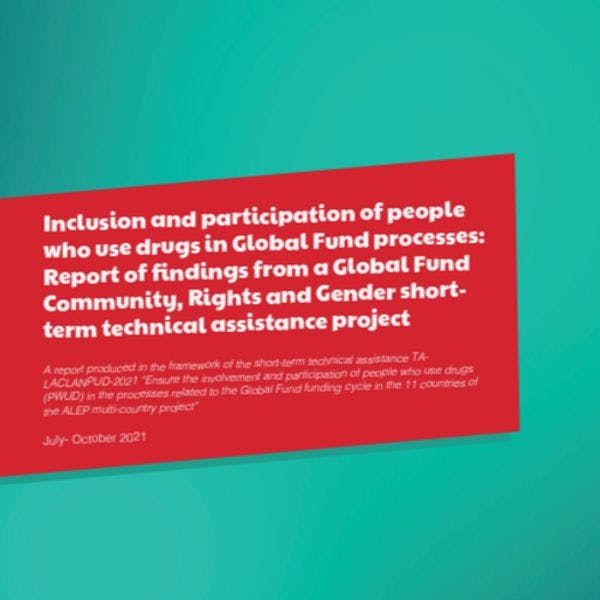Inclusion and participation of people who use drugs in Global Fund processes: Report of findings from a Global Fund Community, Rights and Gender short-term technical assistance project
By Sam Shirley-Beavan, Cinzia Brentari, Pablo Cymerman, Rafael Torruella
Report produced in the framework of the short-term technical assistance TALACLANPUD- 2021 “Ensure the involvement and participation of people who use drugs (PWUD) in the processes related to the Global Fund funding cycle in the 11 countries of the ALEP multi-country project”
There are approximately 5.5 million people who use non-injected drugs in Latin America and the Caribbean, while the number of people who inject drugs is low incomparison to other regions. This is largely due to the fact that, currently, injectinguse is relatively rare outside Colombia, Mexico and Puerto Rico and because therate of use of cocaine and its derivatives (which are commonly not injected) in theregion is among the highest in the world.
As international donors such as the Global Fund to Fight AIDS, Tuberculosisand Malaria (the Global Fund) withdraw from the region, the regional trendhas been an increase in the proportion of harm reduction funding provided bynational governments. However, domestic funding consistently falls short ofwhat international donors have previously provided, leaving services withouta sustainable source of finance and unable to provide continuous services tovulnerable populations. Additionally, the transition to domestic funding appliesprimarily to services for people who inject drugs, and there remain scarce fundingopportunities for services for the majority of people who use drugs in the regionwho do not inject.
As international donors such as the Global Fund to Fight AIDS, Tuberculosisand Malaria (the Global Fund) withdraw from the region, the regional trendhas been an increase in the proportion of harm reduction funding provided bynational governments. However, domestic funding consistently falls short ofwhat international donors have previously provided, leaving services withouta sustainable source of finance and unable to provide continuous services tovulnerable populations.[1] Additionally, the transition to domestic funding appliesprimarily to services for people who inject drugs, and there remain scarce fundingopportunities for services for the majority of people who use drugs in the regionwho do not inject.
During the first year of the project, LANPUD noted that people who use drugs arenot represented inside Global Fund Country Coordinating Mechanisms (CCMs) inthe region (see Table 1). This is despite people who use drugs being at elevated riskof HIV. In this context, LANPUD proposed a project under the Community, Rightsand Gender Technical Assistance Mechanism of the Global Fund. The objective ofthe technical assistance is to:
- Ensure the involvement and participation of people who use drugs inprocesses related to the Global Fund funding cycle in the eleven countriesof the ALEP project.
The sub-objectives are:
- To create a diagnostic of the involvement of people who use drugs inprocesses related to the Global Fund in eleven countries where the ALEPproject is carried out.
- To create an advocacy strategy in CCMs to guarantee the participation ofpeople who use drugs in Global Fund processes.
This report represents the completion of the first sub-objective.
Downloads
Regions
Related Profiles
- Latin American Network of People Who Use Drugs (LANPUD)
- Intercambios Puerto Rico
- Intercambios
- Harm Reduction International (HRI)
